Sugar cane is “Egypt´s national drink.” How “Egyptian” is sugar cane? As futile of a question as asking how Egyptian is the blood that runs down Egyptian veins. If the fact that every juice shop in Cairo sells “asab” (Arabic for sugar cane), or that it is sold in a multitude of formats across the city, are not sufficient proof that asab is a pure shot of smoky-green life, a rundown of Egypt´s juices may prove that perhaps “Egypt´s national drink” is in fact an understatement.
Where does sugar cane come from?
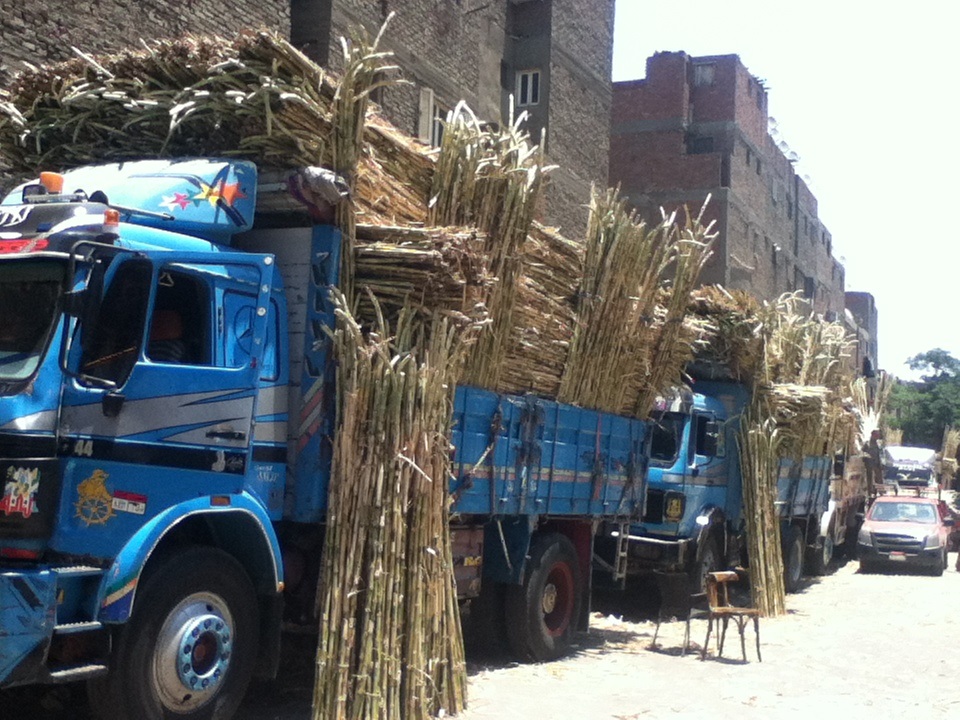
The small room was suddenly filled with the expectant eyes, full of curiosity, of seven Upper Egyptian men. A couple of shy yet amused faces kept gathering outside the room, peering through the window. This room is the office of Cairo´s largest asab market located in Al-Matariyyah, a local district in Northern Cairo with roughly 8 million inhabitants; and the men, Cairo´s mythical suppliers.
With skin burnt by the sun and donning brown “galabeyas,” which blended playfully with their clay skin, the men awaited the questions that can now only attempt to do them justice.
Cairo´s main suppliers of sugar cane work amongst a sea of asab sticks; some neatly stacked in different directions, others thrown at random like pick-up sticks. “We transport the asab that gets here from Upper Egypt to Mansoura, Alexandria, Ismaleya, even Sharm el Sheik,” said one of the men, wide eyed and heady with pride.
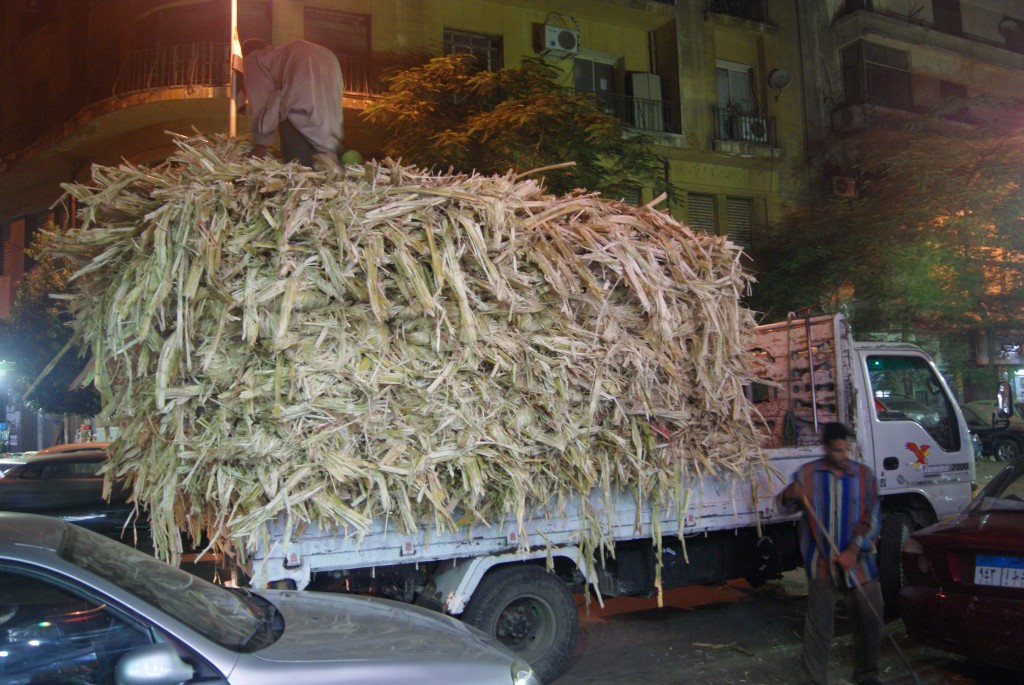
The market mostly consists of a parking lot, a shaded area with benches for people to lay in idle absorption, and the little office. “We receive loads of two or three trucks daily,” answered another radiant man.
My questions had quickly turned into a game of school children taking turns to impress the teacher. “Each truck carries 10,000 kilos of asab,” said the man sitting behind an imposing makeshift wooden table. So once the sugar cane reaches the heart, it is pumped back to the rest of the city.
“We work 24/7 taking the asab to different juice shops in the city.” Even though there are other sugar cane markets in Cairo, such as the one in Saft El Laban in Giza, the people in Matariya claimed to be the largest.
Prices and the bitter sweat sugar cane labor
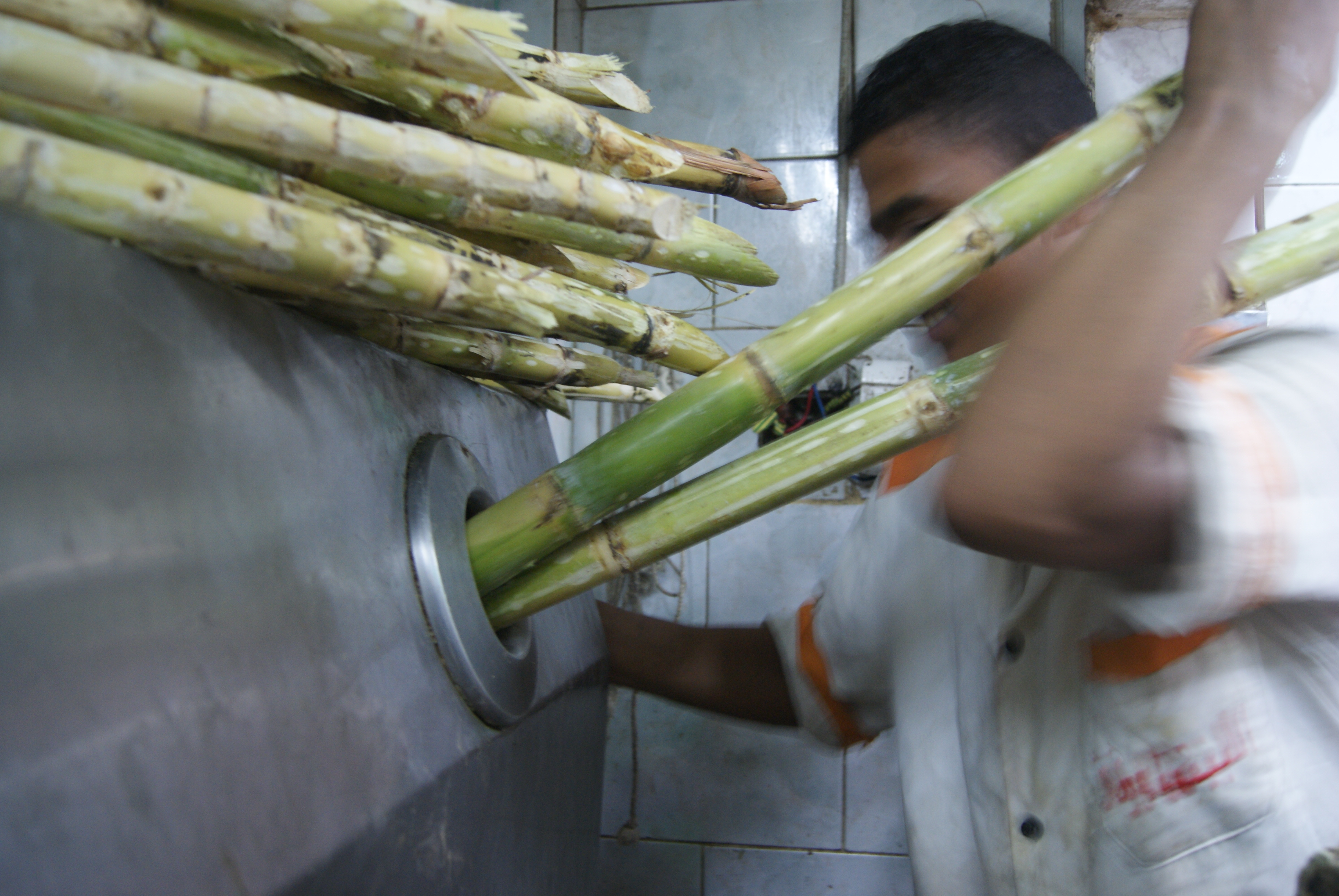
Before the sugar cane invades the streets of Cairo, like the water of an overflowing Nile, the sturdy sticks have travelled a long way from the hot fields of Upper Egypt.
“Juice shops are the ones making all the profit,” said one of the men bitterly, but with a gentle smile left untouched by the recollection of the arduous labor.
From the moment asab sprouts from the land like a fearless arm reaching to grasp the sky, it must be cleaned from weeds. “People are hired to clean the asab,” said Hamada, a 26 year old Egyptian from Upper Egypt´s sugar cane fields. “People are also hired to cut it and clean it from the leaves that begin to grow from it.”
After the cleaning process, the sugar cane is cut and spread out on the ground, where according to the men in Matariyya, it is watered heavily and covered in sand until it grows. After the sugar cane is finally ready to fulfill its purpose, the men from Matariyya step in with their eighteen wheelers, buy the asab from the farmers and transport it for distribution in Cairo.
“You can´t count the amount of people involved in the process,” said one of the men dubiously. But one thing remains clear, “we do the work, they keep the money,” he concluded before bursting into wild laughter.
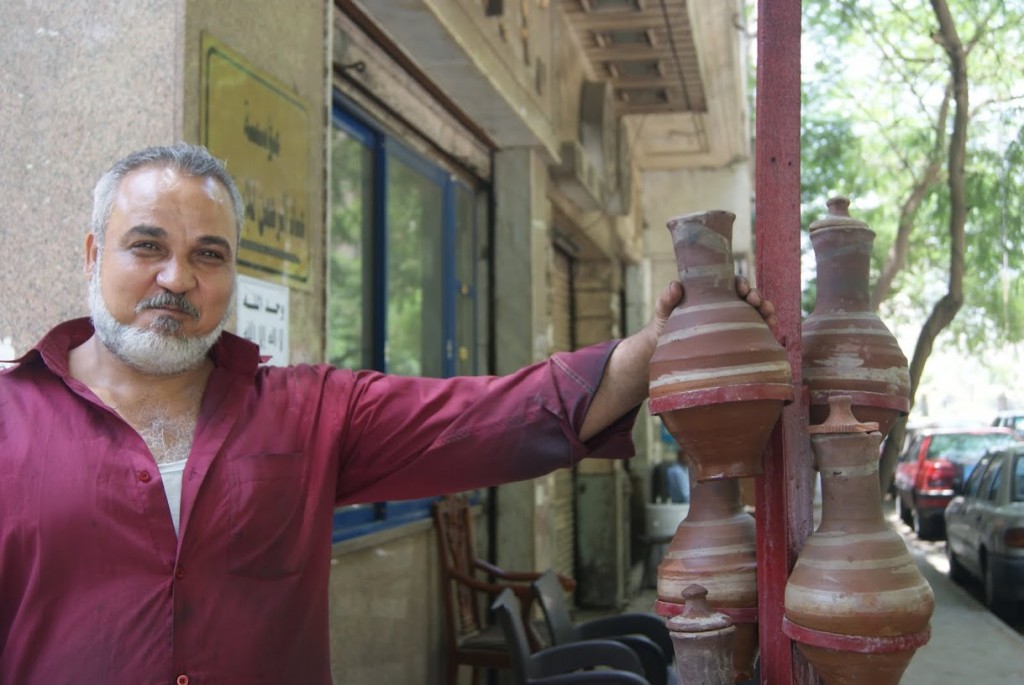
Unless sugar cane is sold exported from Egypt, the precious sticks are sold in “lepsha,” or bundles of four. Every juice shop has its own demand of sugar cane; with some buying anything from “50 lepsha to 100 lepsha a day, depending on the season.” Mohamed, the owner of “Fresh Fruit” juice shop in downtown Cairo, confessed to buying 14,000 L.E. worth of sugar cane a week.
In a city where bread is subsidized to 5 piasters, less than 1 U.S. cent, a big jug of asab is only 1.50 L.E., “a price that has slowly been rising in the past decades,” said Abdallah.
“When I was six years old, asab was twenty five piasters” recalls Hamada. Yet, if need be, one pound can buy a small jug of the refreshing drink.
Forms and modalities of Asab
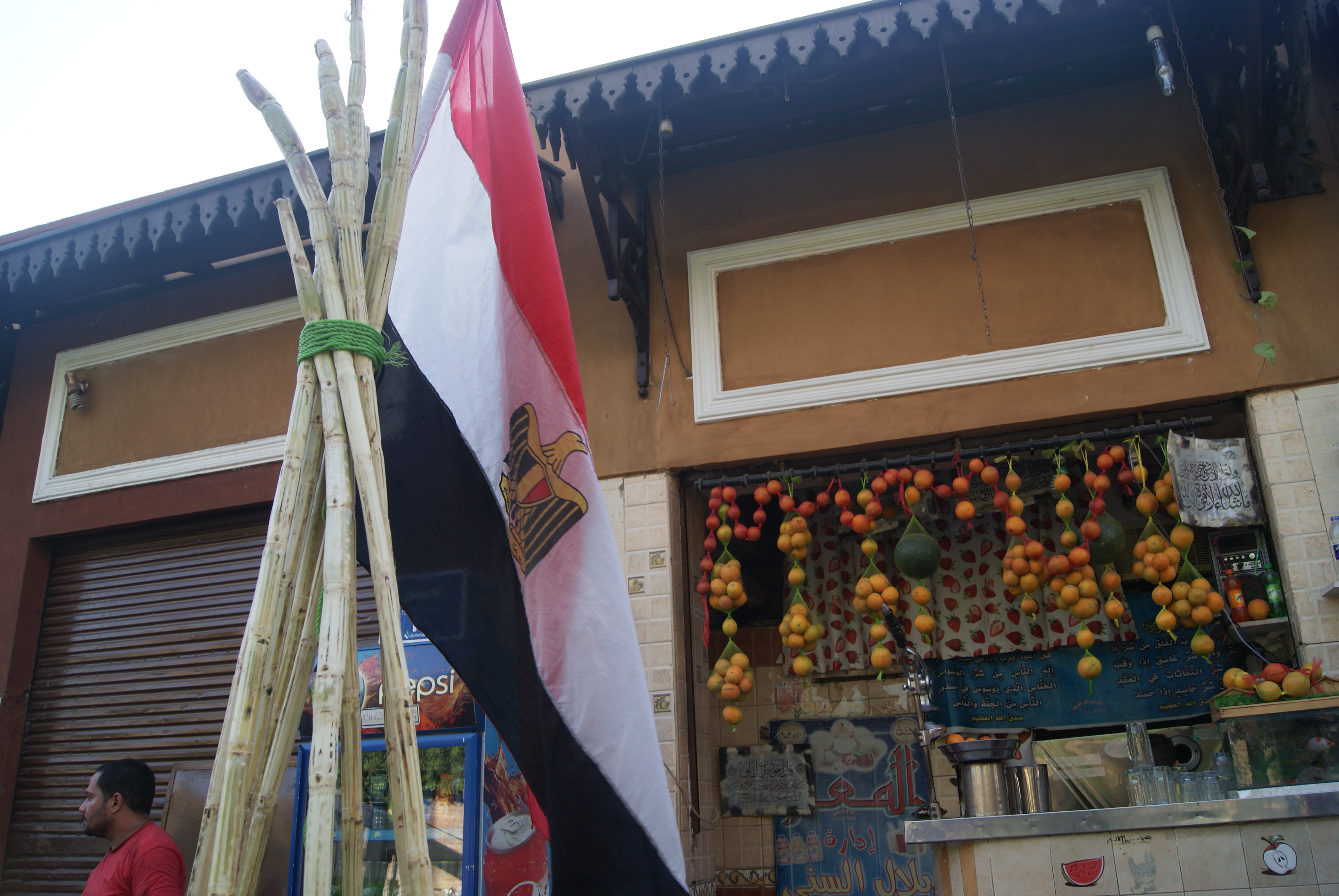
Chugged down in three gulps, the whole ordeal does not take more than one minute. Stepping out of the metro, stumbling out of a car, or even extending an arm out of the car window, a jug or a plastic bag (fi keess) of sugar cane juice, makes its way to thirst stricken lips.
“A hundred percent Egyptian,” uttered one of the men in Matariyya who smiled at me for he knew that for this he needed no translation. “No doubt about it.”
Inside the juice shops, one finds men in suits standing next to squalid kids in their grease-stained vests, young construction workers brought in by a cloud of brick dust and dignified old men with their thick glasses. If only for a minute, they share the small oasis where nets full of succulent mangos and grapes tantalizingly suspended at arm´s reach hang from the sky.
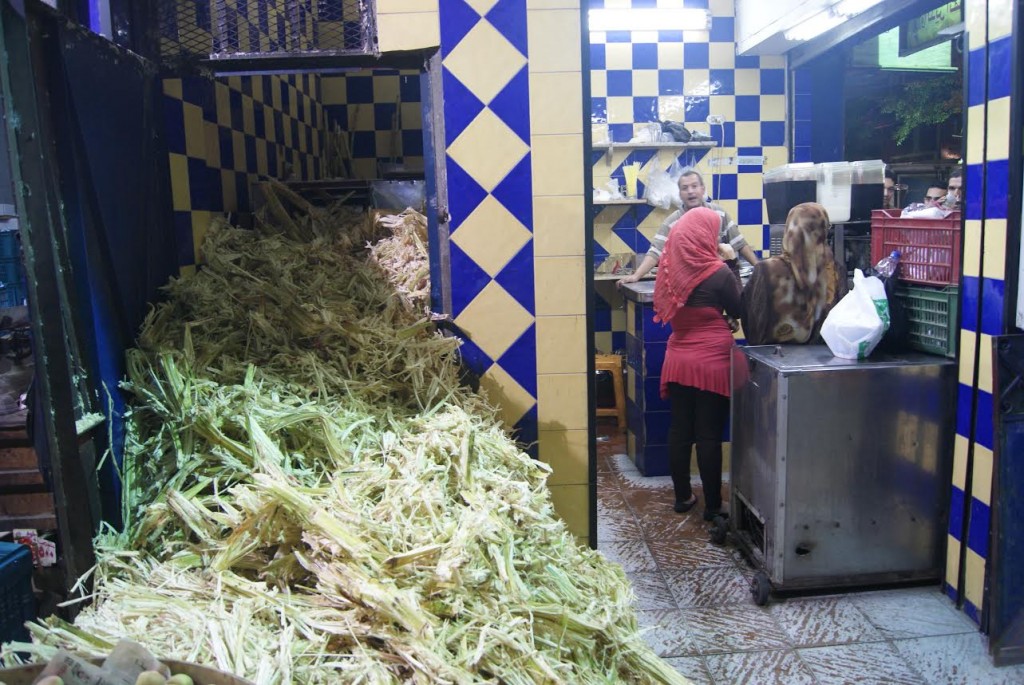
Women buy sugar cane juice in bags and pour it into their baby´s bottle or hand the jugs rather recklessly to the needy tiny hands of their children. For others, sugar cane is consumed for more exuberant purposes.
“Asab gets us high,” said the most dignified man of the bunch. “In Upper Egypt we add lemon to the asab, leave it for two hours, and it´s just like alcohol,” he said smiling; a magic drink indeed.
Healing Qualities
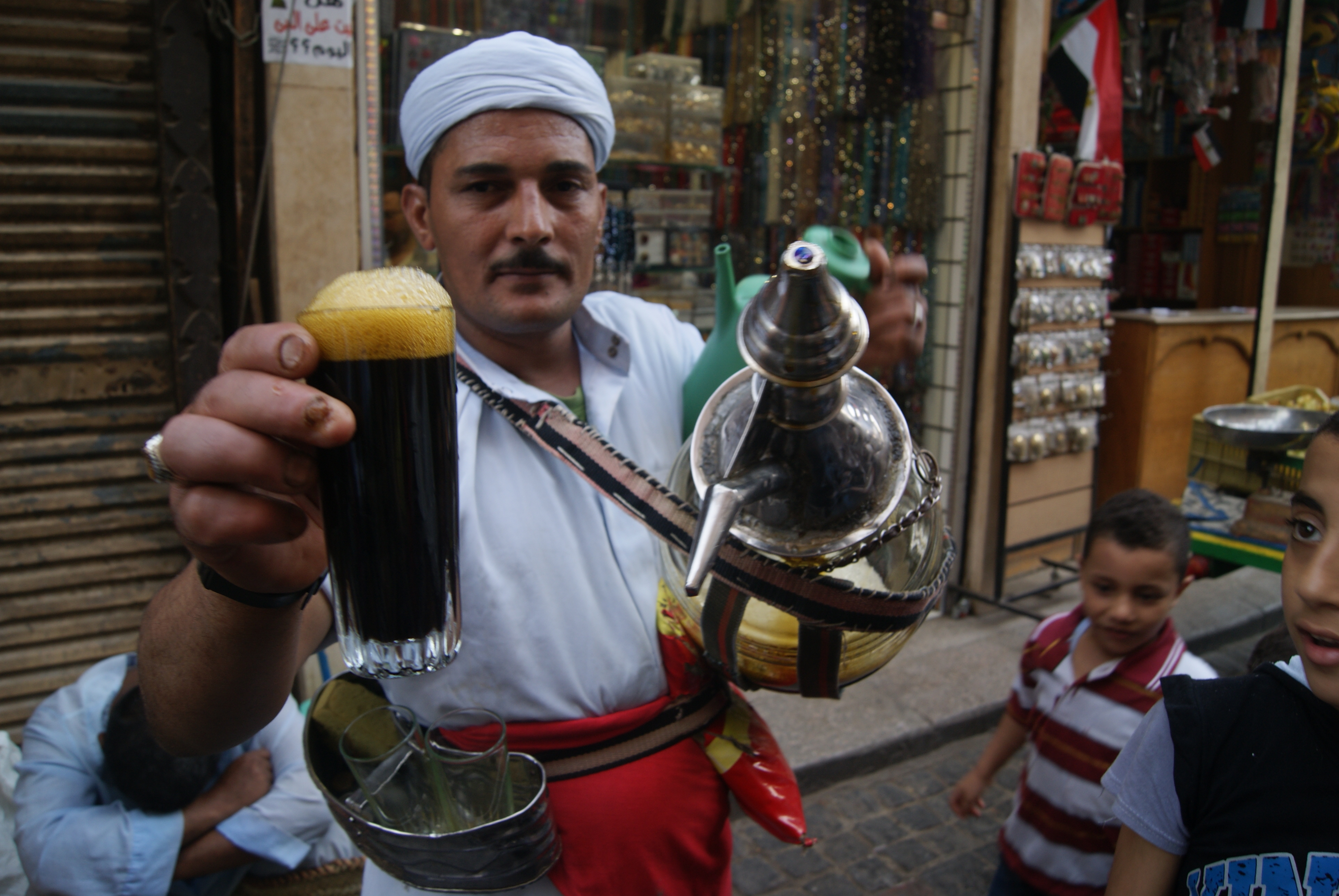
“Asab basically gives power,” affirmed one of the men in Matariyya. In Egypt, power is hard to get by these days, and I´m not in the slightest alluding to Egypt´s energy crisis but to Cairo´s merciless heat. While orange juice is mostly drank to fight or prevents the cold, Asab is drank for it´s overall “healthy” qualities.
“Asab is good for the kidneys and the heart,” said Mohamed without any trepidation. “The first thing they say to you at the doctor´s is drink sugar cane,” continued Mohamed. “Asab for the kidneys and a healthy digestion, orange juice against the cold and carrot juice for eye vision,” is Mohamed´s juice mantra and rank of Egypt´s juices justified in terms of dubious health benefits.
Regardless of the real effects such juices have on Egyptians´ overall wellbeing, it is a healthier alternative to the rampant self-medication.
Pepsi: sugar cane’s main competitor?
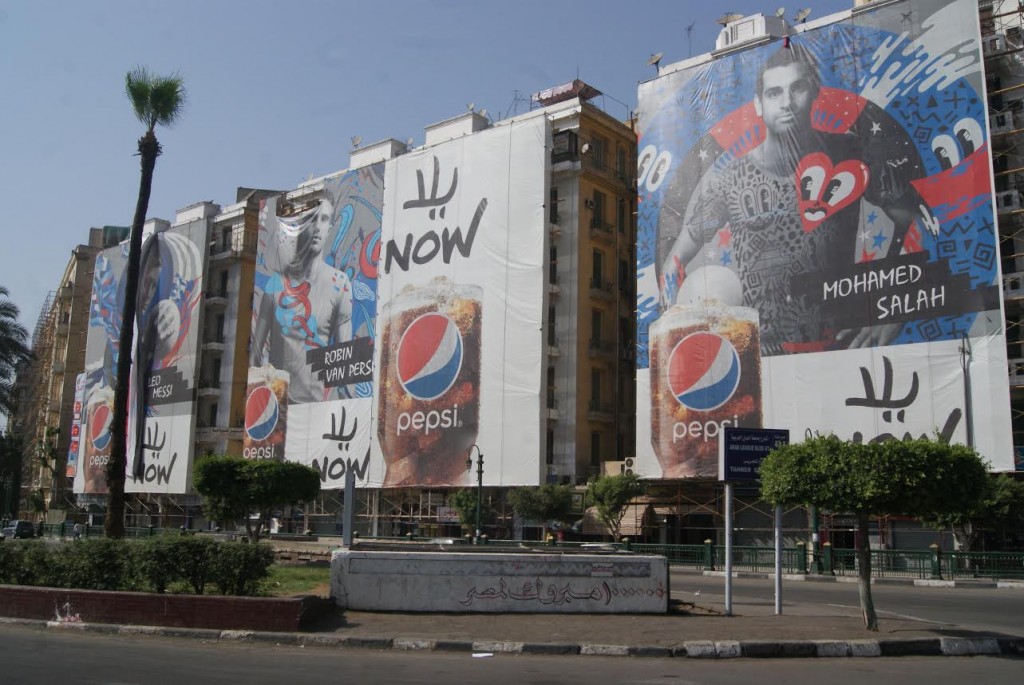
Out of the Arab´s infinite hospitality, I was offered a cold Pepsi by the men in the sugar cane market of Matariyya. As an ostentatious yet unquestionably more appropriate gift than cigarettes, Pepsi had infiltrated the sugar cane´s headquarters.
“Pepsi is actually considered one of the most popular drinks in Egypt,” said Mohsen an advertising agent for PepsiCo Egypt. “After Saudi Arabia, Egypt is the second largest consumer of Pepsi in the Arab World,” he continued.
With massive ads of soccer super stars Messi, Mohamed Salah and Sergio Ramos covering an entire side of Tahrir square, the heart of Cairo, the campaign is symbolic of Pepsi’s intentions for Egyptian bodies.
“Pepsi´s main target group is males ages 21 to 26 who are mostly interested in sports and music.” said Mohsen. “Drinking Pepsi is cool,” said Ahmed with a grin, a 25 year old computer engineer. However, irrevocably, Pepsi has successfully weaved itself into Egyptian culture.
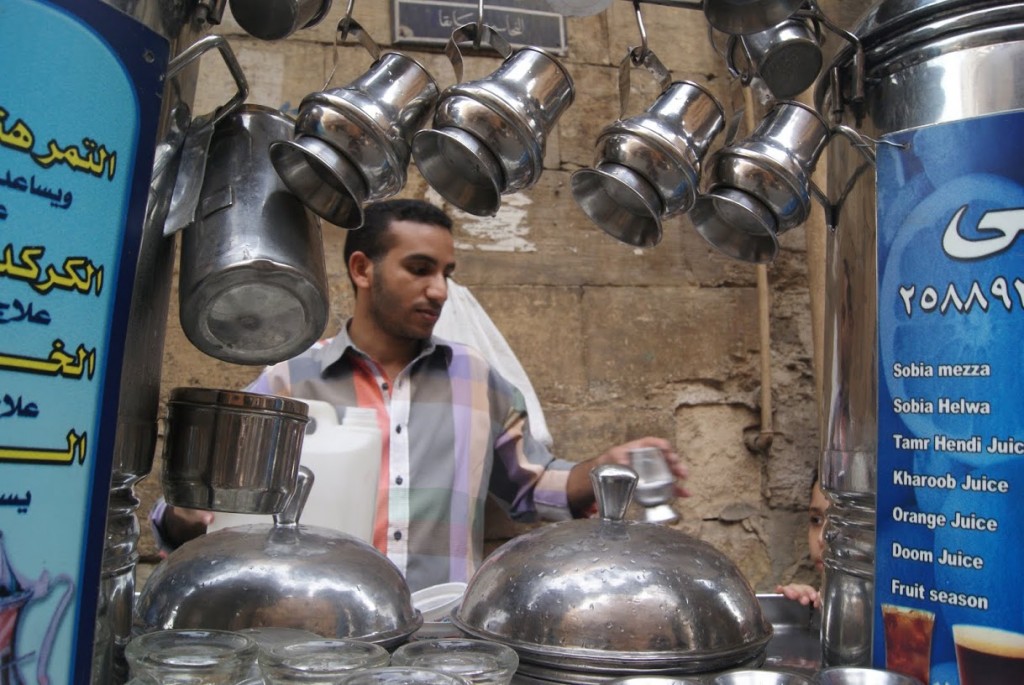
“Ramadan is a high season,” assured Mohsen. “People may break the fast with traditional juices but Pepsi is what you drink after eating,” finality in his voice.
Finally, Pepsi, like sugar cane juice but without the multimillion dollar campaigns, targets everyone. “We offer our products in different sizes to suit our consumers’ needs,” explained Mohsen.
“Reusable glass-bottles are only one pound, cans are 3 L.E., and in Upper Egypt, we sell smaller sizes so that people can afford them.” Thus, despite asab being only 1 L.E., pepsi manages to compete for the coveted title of “Egypt´s national drink.”
The myriad tastes and colors of sugar cane juice
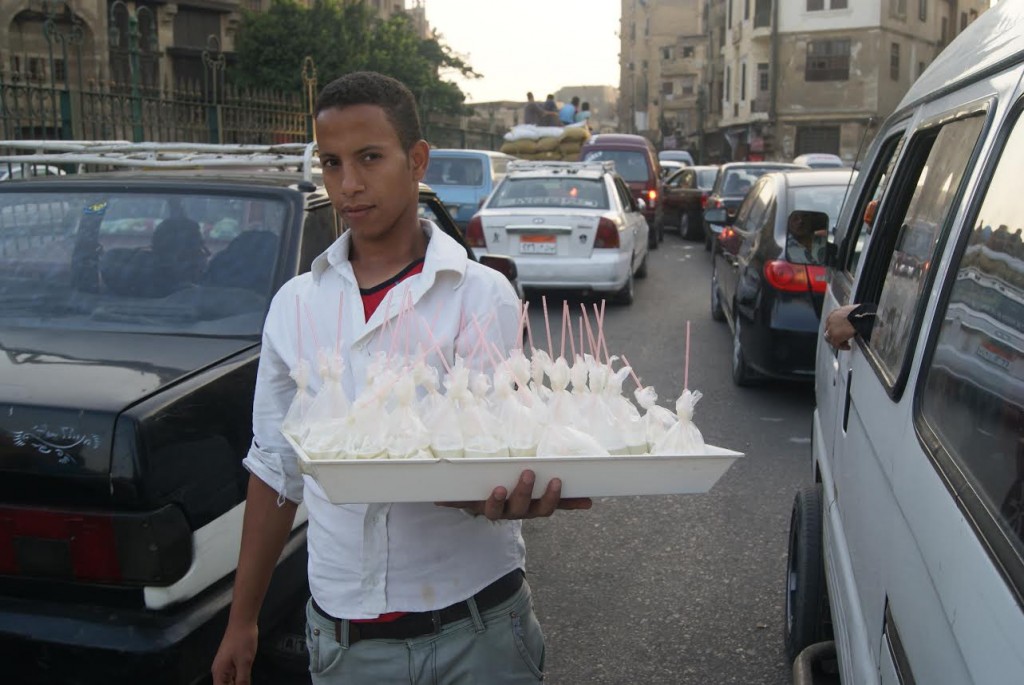
Not every jug of sugar cane juice is identical. Color, location and sweetness are all different aspects of what makes asab unique, while also acting as its own natural system for quality control.
By general consensus amongst the juice shop owners, the best sugar cane comes from Upper Egypt, particularly from Al-Minya and Markas Malawi, said my now friends in galabeyas.
“You can recognize good asab by its flexibility and width,” said Abdallah. Sugar cane juice turns a darker color once it is exposed to the atmosphere due to the oxidation of the iron contained in it, “so the clearer it is, the fresher.” Finally, “everyone buys asab from someone different, “added Abdallah, “so asab always tastes differently.”
The final gulp
Whether one chooses to track sugar cane from its birth in Upper Egypt to the juice that is drank in the two minute escapades in the juice shops, or simply from the wheelbarrows on the sidewalk to the inside of the shop, asab has already made its journey through the country´s open veins.
Sugar cane not only produces jobs and maintains them, as the country´s undeniable source of refreshing energy that Pepsi has not yet been able to displace. If anything asab alongside ersus, subia, tamarahindi and doom, Egypt´s more traditional juices, is a sweet reminder of the joy found in easing the thirst of those who trudge under the Saharan sun.
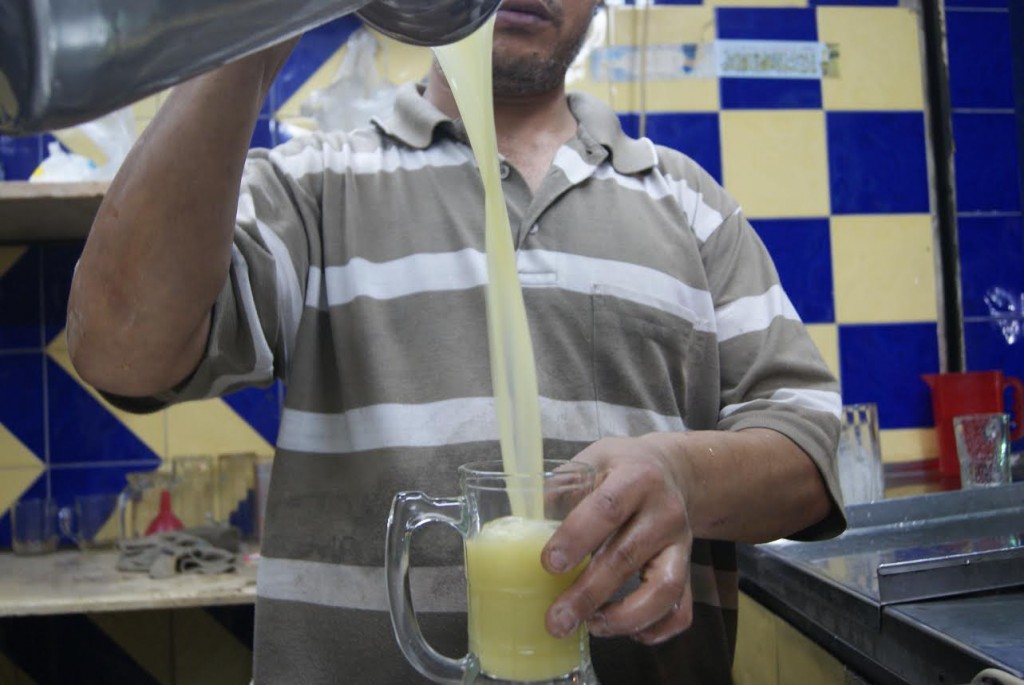






Comments (15)
xnc5bsxnrbscngfrfgc4ecgdgf
[…]just beneath, are various entirely not associated sites to ours, on the other hand, they’re surely really worth going over[…]
ccn2785xdnwdc5bwedsj4wsndb
[…]usually posts some pretty exciting stuff like this. If youre new to this site[…]